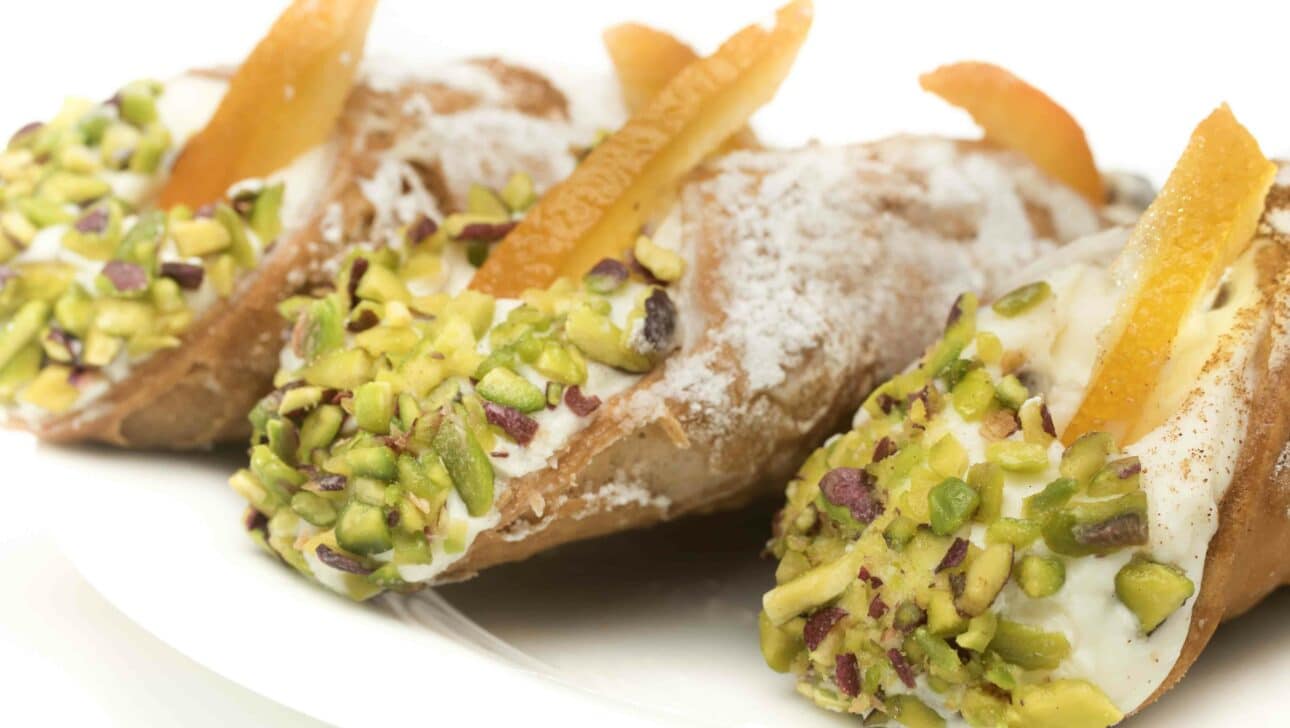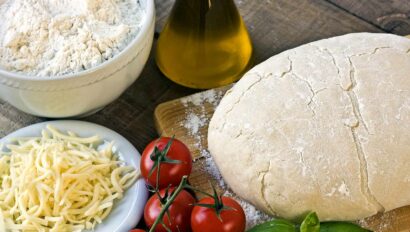My love affair with the birthplace of cannoli.
Across the street from the bakery, on stairs spilling into the piazza, I watch old men wearing driver’s caps and suits stop and catch up on the day’s news. Nearby, church bells chime and life goes by, Sicilian style, a tempo set centuries ago. I have come for a snack in the middle of it all.
For as much as I love Sicily – an island that I’ve called home on more than one occasion – I am a cannoli fanatic. While other countries or regions can argue (justifiably or not) that they were the birthplace of Sicilian staples like pizza and gelato, cannoli is a true island native.
Made from gently sweet and tangy ricotta piped into a crisp shell, a cannolo (the singular of cannoli) is not health food. Done right, the shell is fried and made with lard. It’s hard to eat just one, and it has nothing to do with the damp versions you may have tried in your nearest city’s Little Italy. But take one bite on the piazza steps with the world going by, and it’s quite easy to let any worries go with a Sicilian shrug. Cannoli are good for the soul.
Part of what keeps these pastries great is the Sicilian resistance to change. Here, it’s impossible not to admire daily happenings like the thousands of decades-old Fiats still in use and the leather-faced shepherds who look as if they’ve just walked out of a history book as they pick and sell wild asparagus to make a bit of extra money.
While many of Sicily’s glories are openly displayed, a local guide makes the visit an intensely rich one, something that’s particularly true when looking for the island’s top spots for pastry. Most of the best places for cannoli don’t put it on display. Self-respecting cannoli makers might set out a tray if they know that it will sell very rapidly, but across the island, the best places make them to order.
There’s good reason for keeping them out of sight – it preserves the essential crispness of the shell because the clock starts ticking the moment the tube is filled. Order a fresh cannolo at the counter like generations of Sicilians have done, wait patiently for the filling to be piped in and you get the authentic experience of breaking through the crunch into the creamy filling for a bite of heaven.
Sicilians take simplicity very seriously. You see that on any drive on the island’s narrow roads. You feel it on the receiving end of the warm, unfussy hospitality. You certainly taste it in cannoli. The ends might be dabbed in crushed pistachio, tiny shards of chocolate, or a bit of candied orange peel. The whole thing could have a dusting of powdered sugar. Or not. The unspoken rule is not to tamper with the classics. Messing with perfection simply isn’t done. Break any Sicilian recipe down to its raw ingredients, and you’ll come upon a story that inevitably emphasizes why.
One of my favorite Sicilian memories is of looking down from my old office window to see the egg-shaped car owned by a local farmer, who – rumor had it – would pop into the convenience store downstairs to sell his just-made ricotta. Inside the trunk was a cooler filled with small wheels of cheese so delicate that they would last only a few days. The texture was pillowy soft. It was still warm. Run through a sieve, once or even twice, to make a cannoli filling, that ricotta took on an ultra-silky texture that I’ve never experienced anywhere else.
Sicilians might be slow to take up on innovations, but they extol the virtue of doing things the right way. That’s the part of the Sicilian ethos that I most admire, and one that’s very enjoyable to ponder there on the steps, watching the world go by and nibbling on a perfect dessert.
Food writer Joe Ray (@joe_diner) is a Lowell Thomas Travel Journalist of The Year, a restaurant critic, and author of “Sea and Smoke” with chef Blaine Wetzel.




